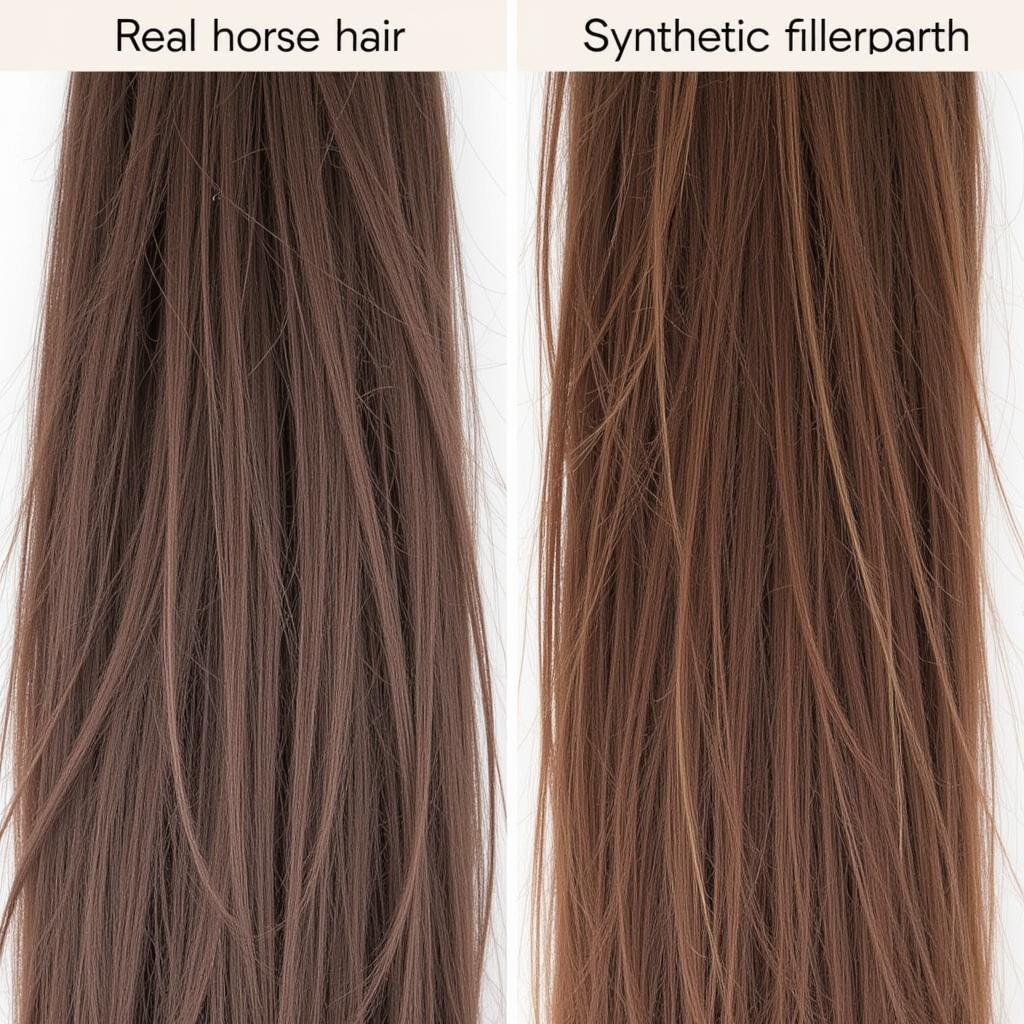Horse hair is often associated with traditional, handcrafted rocking horses, evoking a sense of nostalgia and quality. But what’s the story behind this material, and how does it contribute to the overall appeal of these beloved toys? This article delves into the world of Horse Hair For Rocking Horses, exploring its history, usage, and significance.
The History of Horse Hair in Rocking Horse Making
For centuries, horse hair has been a prized material in various crafts, including upholstery, brushes, and, of course, rocking horses. Its use in rocking horse construction dates back to the early days of these toys, when artisans sought durable, natural materials to create realistic and long-lasting playthings. Initially, real horse hair was extensively used, adding to the authenticity and charm of the rocking horse.
From Real Horse Hair to Synthetic Alternatives
Over time, with changing sensitivities and material availability, synthetic alternatives became more prevalent. These alternatives offer several advantages, including being hypoallergenic, more readily available, and often more affordable. However, the allure of real horse hair remains, and many high-end rocking horse makers continue to use it, catering to collectors and those seeking the most authentic experience.  Synthetic horse hair alternatives for rocking horses
Synthetic horse hair alternatives for rocking horses
Sourcing and Preparing Horse Hair for Rocking Horses
Whether real or synthetic, the horse hair used for rocking horses needs to meet certain criteria. It should be strong, resilient, and able to maintain its shape. Real horse hair typically comes from the mane and tail, which are carefully cleaned, processed, and often dyed to achieve the desired color. handcrafted rocking horses often utilize these traditional methods.
Choosing the Right Type of Horse Hair
The type of horse hair used can significantly impact the final appearance and feel of the rocking horse. Longer hair is generally preferred for the mane and tail, while shorter hair might be used for the horse’s “coat” in some designs. The texture can also vary, with some horse hair being finer and silkier, while others are coarser and more robust. vintage horse on wheels often showcase these diverse hair types.
Attaching Horse Hair to a Rocking Horse
The process of attaching the horse hair to the rocking horse requires skill and precision. It involves carefully securing the hair to the wooden frame, often using traditional techniques like tacking and gluing. The hair is then styled and shaped to create a realistic and aesthetically pleasing appearance. 1950’s rocking horse offer a glimpse into these traditional attachment methods.
Maintaining and Caring for Horse Hair on Rocking Horses
Proper care and maintenance are essential to preserve the beauty and longevity of the horse hair. Regular dusting and gentle brushing can help keep the hair clean and free of tangles. Avoid exposing the rocking horse to direct sunlight or excessive moisture, which can damage the hair over time. high chair rocking horse desk requires similar care and attention to detail in preserving its aesthetics.
Why Choose Horse Hair for Your Rocking Horse?
The use of horse hair adds a touch of realism, history, and artistry to a rocking horse. It enhances the tactile experience, providing a soft and luxurious feel. Moreover, it contributes to the overall aesthetic appeal, creating a sense of movement and life. riding toy horse for adults often incorporate horse hair for its added aesthetic appeal.
In conclusion, horse hair, whether real or synthetic, plays a vital role in the creation and appeal of rocking horses. It adds a unique touch of authenticity, craftsmanship, and visual appeal, making these toys cherished heirlooms for generations to come. The choice between real and synthetic horse hair depends on individual preferences and priorities, considering factors like authenticity, cost, and maintenance.
FAQ
- Is real horse hair still used in rocking horses? Yes, though synthetic alternatives are more common.
- How do I clean horse hair on a rocking horse? Gentle brushing and dusting are usually sufficient.
- Where can I find horse hair for rocking horse restoration? Specialty craft stores or online suppliers often carry it.
- What are the benefits of synthetic horse hair? It is hypoallergenic, readily available, and often more affordable.
- How is horse hair attached to a rocking horse? Traditional methods involve tacking and gluing.
6.. How can I tell if the horse hair on my rocking horse is real or synthetic? Real horse hair has a more natural texture and may have slight variations in color. Synthetic hair is often more uniform and may have a slightly different sheen.
7.. What should I do if the horse hair on my rocking horse becomes damaged? You can contact a professional rocking horse restorer who can repair or replace the damaged hair.
Common Situations and Questions:
- My child has allergies, can I still have a rocking horse with horse hair? Yes, synthetic horse hair is hypoallergenic and a great alternative.
- I want a traditional rocking horse, should I choose real horse hair? Real horse hair adds to the authenticity, but consider the maintenance and cost.
Further Reading on Justus Horses USA:
- Explore our range of handcrafted rocking horses.
- Find a vintage horse on wheels for a classic touch.
For assistance, contact us at Phone: 0772127271, Email: [email protected], or visit us at QGM2+WX2, Vị Trung, Vị Thuỷ, Hậu Giang, Việt Nam. We have a 24/7 customer service team.